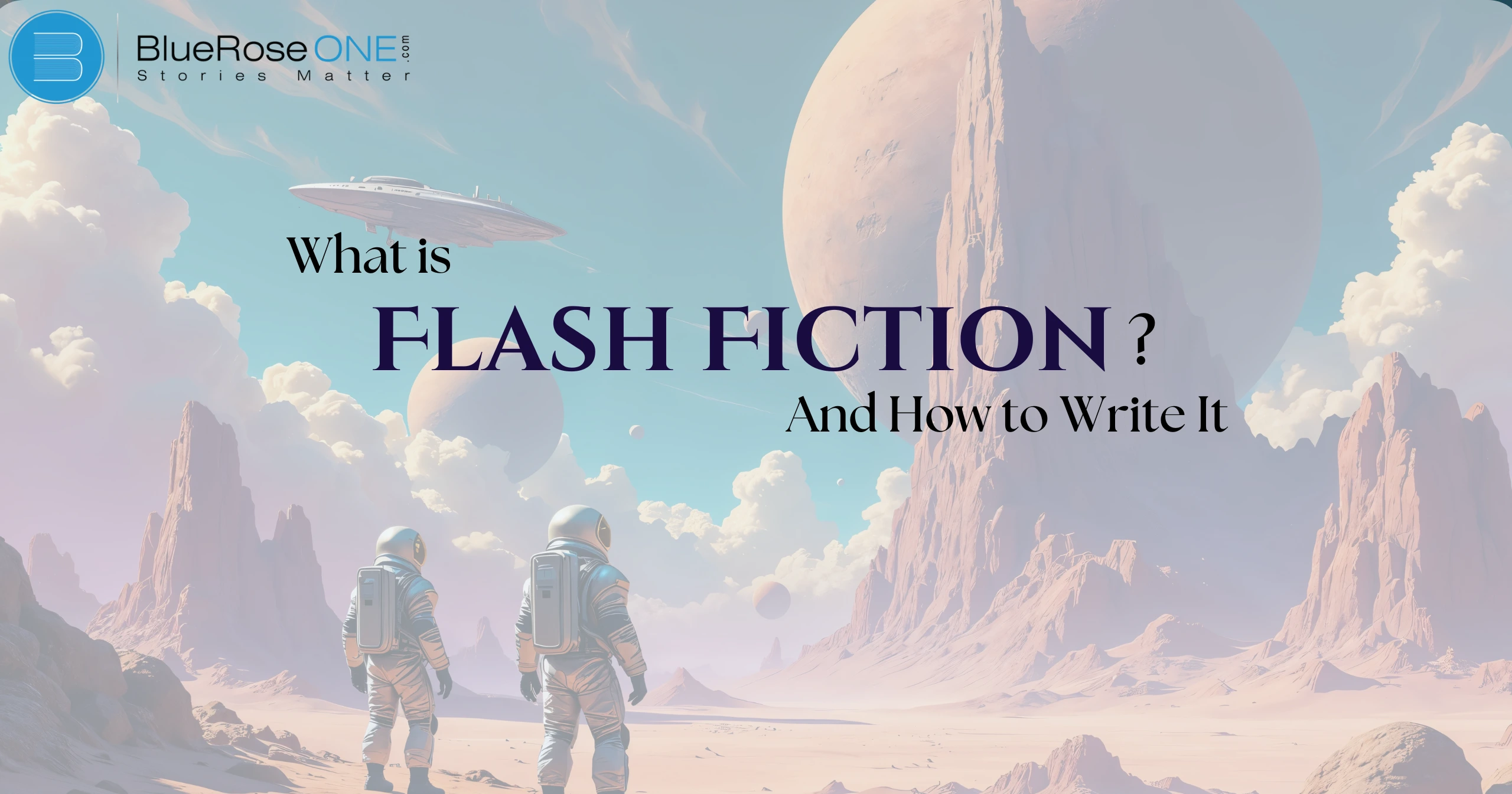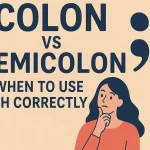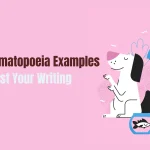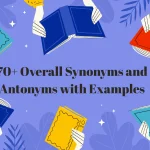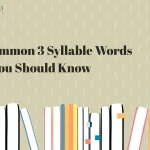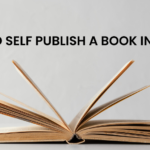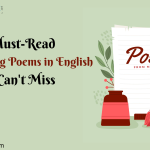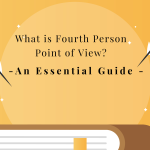What is Flash Fiction?
Flash fiction is an extremely short story, usually under 1,000 words, that tells a complete plot with characters, conflict, and resolution. Unlike longer stories, flash fiction emphasizes brevity and making every word count. To make a lasting impression, writers must instantly capture the reader’s attention and frequently use powerful emotions or a twist ending. Flash fiction is popular because of its short, engaging nature, making it an excellent choice for readers seeking a quick, exciting story.
Flash fiction is a type of fiction that is extremely brief. Unlike novels or even short tales, flash fiction requires clarity, with no place for fluff or needless details. Writers must convey plot, character development, and emotional depth in a short amount of space.
Flash fiction is often defined as stories with fewer than 1,000 words. The word count can occasionally drop below 500 or even 100 words. Despite its briefness, it can nonetheless carry a powerful punch, frequently leaving the reader with a lasting impression.
Flash Fiction vs Short Stories
Flash fiction and short tales are both brief genres of narrative, but they differ in length and emphasis. Flash fiction is often between 100 and 1,000 words long, offering a comprehensive tale in a short span. It relies on powerful images and brief, memorable moments.
Short stories, on the other hand, are typically longer, with word counts of up to 7,500, allowing for more character development and narrative details. Flash fiction is great for readers who want a quick, thought-provoking read with few information.
Popular Examples of Flash Fiction
One of the most famous flash fiction pieces is attributed to Ernest Hemingway: “For sale: baby shoes, never worn.” With just six words, this story invokes deep emotion, painting an entire narrative in the reader’s mind. Another classic example is Lydia Davis’ “The Mice,” which presents a complete and thought-provoking story in only a few sentences.
Why Flash Fiction is So Popular
In an age where digital consumption and shorter attention spans reign supreme, flash fiction is gaining popularity. But why do readers and writers love it so much?
The Key Elements of Flash Fiction
Conciseness and Precision
Conciseness and accuracy are crucial elements of flash fiction. With a word restriction of around 1,000 words, each statement must serve a purpose. Flash fiction necessitates tight storytelling in which characters, storyline, and ideas are presented rapidly and developed efficiently.
Writers aim to convey more meaning with fewer words, resulting in meaningful stories that, despite their shortness, appeal with readers. This precision is what distinguishes flash fiction as unique and strong.
How to Write Flash Fiction
Now that you know what flash fiction is, how do you go about writing it? Here’s a step-by-step guide to help you craft your own flash fiction story.
Start with a Strong Opening Line
When writing Flash Fiction, it is critical to begin with a powerful first sentence. This first sentence should capture the reader’s attention and establish the tone of the story. Every word counts in flash fiction, so the introduction must be powerful and captivating.
It can introduce the main character, foreshadow the conflict, or set an intriguing mood. A strong introduction not only draws readers in, but also establishes the compact yet rich nature of flash fiction.
Keep the Focus Tight
To create great Flash Fiction, keep your emphasis focused. There is no room for further information or subplots in Flash Fiction, which is generally less than 1,000 words long. Stick to a single major subject or incident, and make sure each word adds value to the story.
This will help to keep a concise, effective storyline without extraneous distractions. By focusing on a single incident or character, you may write a compelling, short story that embodies the essence of Flash Fiction.
Craft a Meaningful Ending
Crafting a good finish in flash fiction is essential since it creates an impression on the reader. Because flash fiction is short, every word counts, and the ending should be consistent with the story’s topic or feeling. Aim for a twist, epiphany, or poignant moment that prompts thinking. This connection not only improves the story, but also makes it memorable. In flash fiction, a strong finish may elevate a small story into a memorable experience for readers.
Open vs Closed Endings in Flash Fiction
When writing flash fiction, you have the option of using either an open or closed ending. An open ending provides readers with questions and allows them to anticipate what occurs next, resulting in a lasting impact. In contrast, a closed ending neatly concludes the story by presenting obvious resolutions.
Both types have advantages; an open ending might elicit conversation, but a closed conclusion provides satisfaction. When determining which conclusion works best for your flash fiction, keep the topic and message in mind.
Tips for Writing Effective Flash Fiction
While flash fiction may appear simple, writing it well can be difficult. Here are some practical techniques to help your flash fiction shine.
Edit Ruthlessly
When creating flash fiction, it is critical to edit brutally. Flash fiction is all about brevity, therefore every word must have a purpose. After you’ve finished your draft, critically evaluate it. Remove needless adjectives, redundant sentences, and details that do not enhance the plot or character development.
Aim for a clear and powerful effect with a limited word count. Remember that less is sometimes more with flash fiction; the idea is to elicit powerful emotions immediately.
Show, Don’t Tell
“Show, don’t tell” is an important tip for creating effective flash fiction. Rather than explaining feelings or actions, utilize vivid descriptions and sensory elements to immerse readers in the narrative. For example, instead of saying a character is upset, describe their quivering hands or tears streaming down their cheeks.
This strategy fosters a stronger connection and makes the story more interesting. Remember, every word counts in flash fiction, so showing can have a long-lasting impression.
Avoid Unnecessary Details
When writing flash fiction, it is critical to avoid excessive description. Every word counts in this condensed format, so concentrate on the most important aspects of your story. Remove descriptions that do not progress the plot or develop characters.
Instead, utilize vivid and clear language to quickly communicate emotions and settings. This allows readers to focus on the heart of your story rather of becoming bogged down in unnecessary details. Keeping it simple and direct will increase the impact of your flash fiction.
How Long Should Flash Fiction Be?
Word count is always a key consideration in flash fiction. But how short is too short?
Common Word Count Limits
Flash fiction typically ranges from 100 and 1,500 words, with many writers aiming for 300 to 1,000 words. This brief format requires authors to express great stories in a little amount of space.
Many literary publications and contests have strict word limitations, usually about 1,000 words, emphasizing the significance of brevity and impact. Understanding these typical word count constraints is critical for anyone who wants to master the craft of flash fiction and engage readers effectively.
Finding the Right Length for Your Story
Flash fiction often ranges from 100 to 1,500 words, with the most popular length being 300 to 1,000 words. This brevity requires writers to express a whole story in a limited amount of space, relying on great imagery and brief language.
The idea is to make a strong effect in a few lines while making every word count. Understanding these length parameters allows writers to create great flash fiction that captures readers’ attention and makes a lasting impact.
Popular Platforms to Submit Flash Fiction
Flash Fiction Online is a well-known platform for publishing short stories of 1,000 words or fewer. This magazine focuses on high-quality, compelling narratives, offering a platform for both new and veteran writers to share their work.
With a monthly publication schedule, Flash Fiction Online allows authors to reach a large readership. Submitting is simple, and the site prioritizes stories with powerful emotions and rich images, making it an excellent pick for anybody interested in flash fiction.
Submitting your flash fiction can be an exciting method to share your work with a larger audience. Several famous venues allow writers to submit their 100-word stories. Websites such as Flash Fiction Online and Microfiction Mondays provide dedicated areas for short stories.
Wattpad also lets writers share flash fiction and interact with readers. Each platform has its own set of criteria, which should be reviewed before submitting. These possibilities will allow you to acquire visibility and connect with other flash fiction aficionados.
Smokelong Quarterly is a popular outlet for flash fiction writers. It focuses on stories that are often under 1,000 words long, allowing authors to demonstrate their talent in a short manner. The magazine is noted for its distinct voice and appreciation for experimental writing, which fosters innovation and uniqueness.
By submitting to Smokelong Quarterly, writers can reach an interested readership who appreciates the art of flash fiction, making it an excellent choice for those wishing to publish their short stories.
Conclusion
Although flash fiction is quick, it is an effective style of narrative that necessitates careful attention to description, character, and conflict. With its expanding popularity, now is a great moment to start producing your own flash fiction pieces. Remember that what matters is how the tale makes the reader feel, not how long it is.
Frequently Asked Questions
Some famous examples include Hemingway’s six-word story and Lydia Davis’ “The Mice.”

